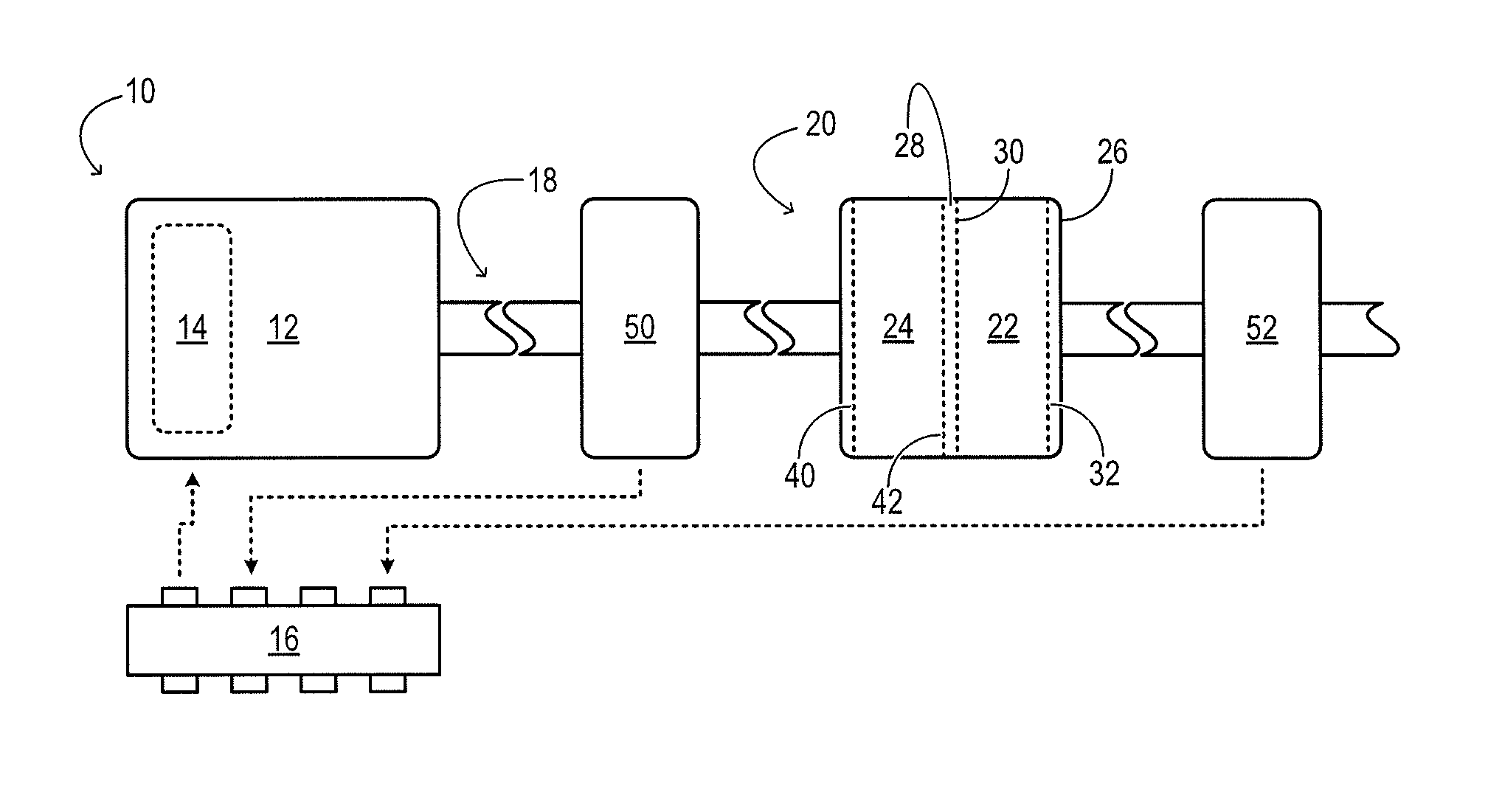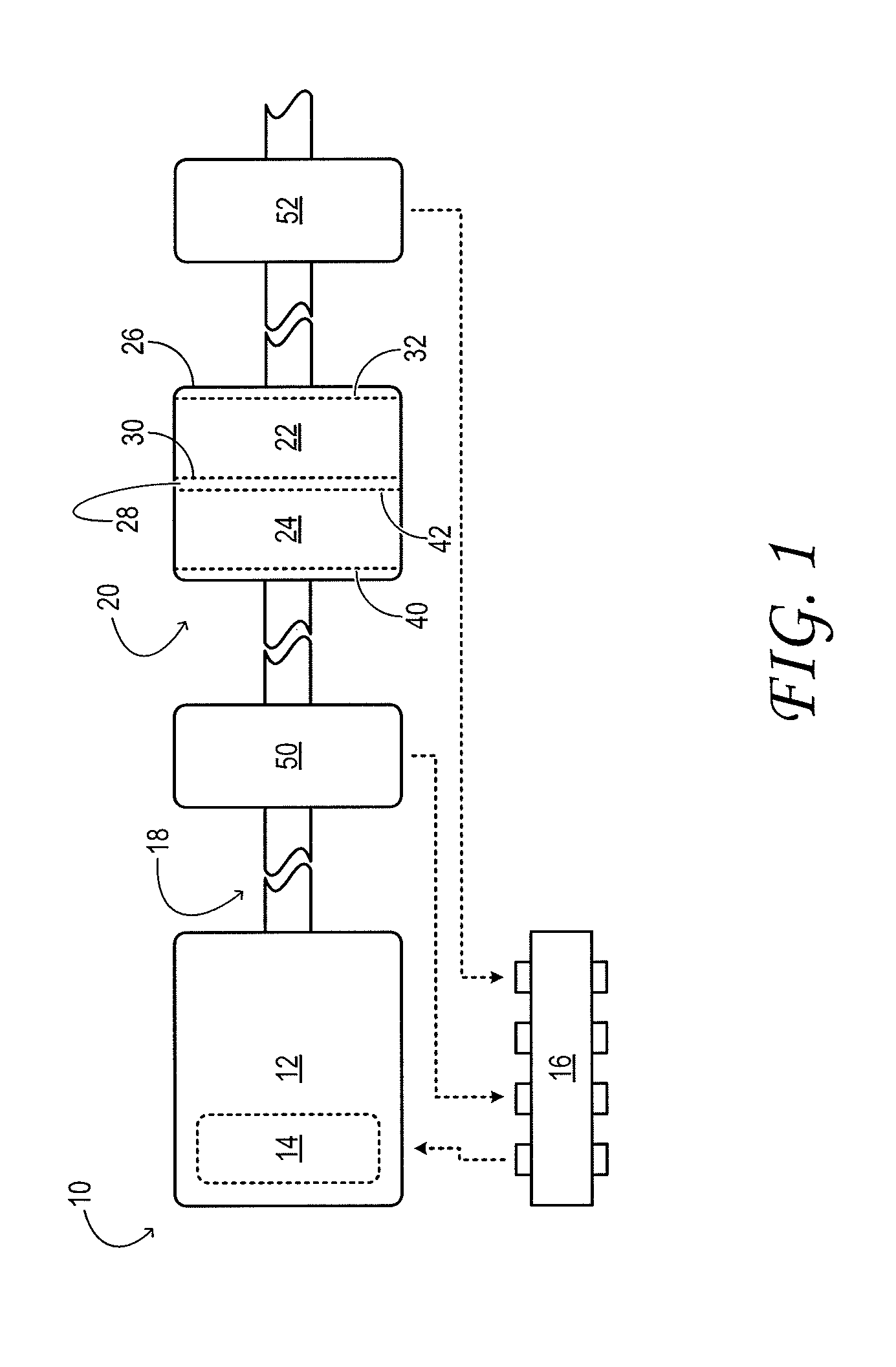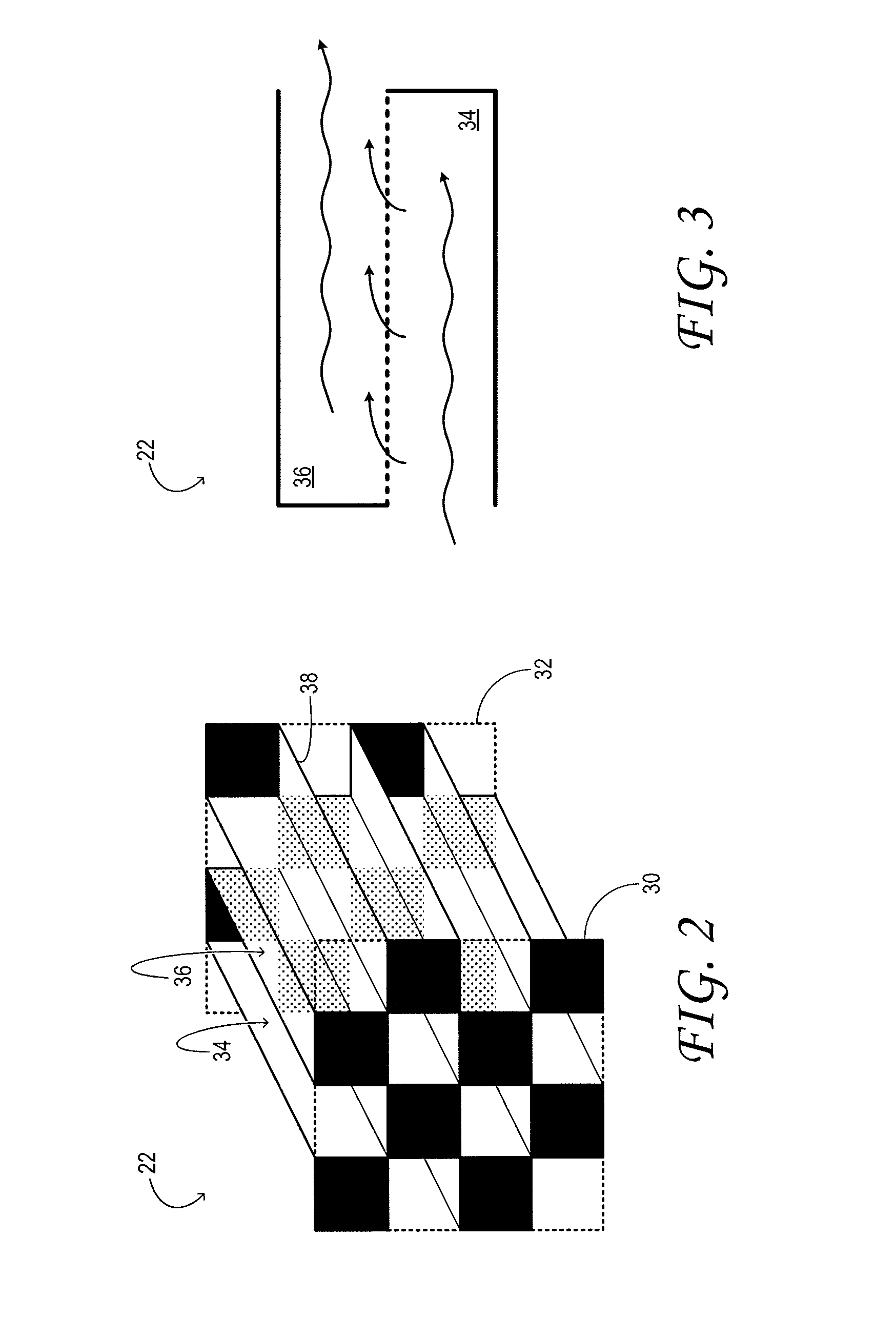Even-loading DPF and regeneration thereof
a technology of dpf and dpf, applied in the field of motor vehicle engineering, can solve the problems of reducing mechanical efficiency and fuel economy of engines, increasing the capacity of dpf may require increasing its length, or its diameter, and reducing engine performance and fuel economy, so as to improve thermal management during regeneration and reduce thermal gradients and mechanical stresses during regeneration. , the effect of reducing backpressur
- Summary
- Abstract
- Description
- Claims
- Application Information
AI Technical Summary
Benefits of technology
Problems solved by technology
Method used
Image
Examples
Embodiment Construction
[0016]The subject matter of this disclosure is now described by example and with reference to the illustrated embodiments listed above. Components, process steps, and other elements that may be substantially the same in one or more embodiments are identified coordinately and are described with minimal repetition. It will be noted, however, that elements identified coordinately may also differ to some degree. It will be further noted that the drawing figures included in this disclosure are schematic and generally not drawn to scale. Rather, the various drawing scales, aspect ratios, and numbers of components shown in the figures may be purposely distorted to make certain features or relationships easier to see.
[0017]FIG. 1 schematically shows aspects of an example engine system 10 in one embodiment. The engine system includes engine 12, which admits air and fuel and generates mechanical power for driving a motor vehicle. In the illustrated embodiment, electronic fuel injectors 14 con...
PUM
| Property | Measurement | Unit |
|---|---|---|
| temperature | aaaaa | aaaaa |
| exhaust-permeable | aaaaa | aaaaa |
| flow area | aaaaa | aaaaa |
Abstract
Description
Claims
Application Information
 Login to View More
Login to View More - R&D
- Intellectual Property
- Life Sciences
- Materials
- Tech Scout
- Unparalleled Data Quality
- Higher Quality Content
- 60% Fewer Hallucinations
Browse by: Latest US Patents, China's latest patents, Technical Efficacy Thesaurus, Application Domain, Technology Topic, Popular Technical Reports.
© 2025 PatSnap. All rights reserved.Legal|Privacy policy|Modern Slavery Act Transparency Statement|Sitemap|About US| Contact US: help@patsnap.com



